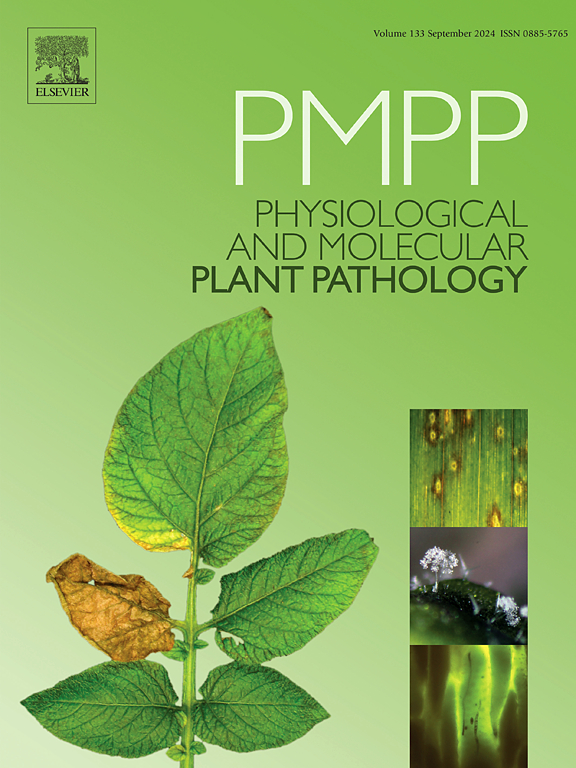Driving sustainability in fruit-based cropping Systems: Intercropping impacts on growth, soil health, microbial dynamics and yield stability
IF 2.8
3区 农林科学
Q2 PLANT SCIENCES
引用次数: 0
Abstract
Monoculture practices in fruit orchards have resulted in critical issues such as soil degradation, nutrient depletion, biodiversity loss and reduced system resilience. Intercropping cereals and legumes within fruit-based systems presents a sustainable solution, enhancing both agroecosystem functionality and productivity. This integrative review compiles and synthesizes studies from 2000 to 2025 to evaluate the agronomic and ecological impacts of intercropping in fruit-based systems. This review critically examines the impact of intercropping on vegetative growth, reproductive performance, fruit yield and quality, soil physico-chemical properties, nutrient dynamics, microbial diversity, enzymatic activities and arbuscular mycorrhizal (AM) fungal associations in fruit orchards. While focusing on cereal-legume intercropping, the review also compiles relevant studies involving other intercrops such as grasses, vegetables and medicinal plants to provide a comprehensive understanding of diverse intercropping models. Evidence demonstrates that intercropping enhances soil organic carbon sequestration, biological nitrogen fixation, phosphorus solubilization, potassium mobilization and improves exchangeable calcium and magnesium pools. Enhanced rhizosphere interactions stimulate soil microbial biomass, including beneficial bacteria, fungi and AM fungi, which contribute to nutrient cycling and organic matter decomposition. Improved leaf nutrient indices, particularly for N, P, K and micronutrients, have been consistently observed under legume intercropping. These physiological enhancements translate into increased canopy volume, trunk girth, fruit set, fruit biochemical traits (total soluble solids, sugar-acid ratio, anthocyanins), and overall yield efficiency. Furthermore, intercropping systems significantly elevate key soil enzymatic activities such as dehydrogenase, phosphatase and cellulase, indicating superior soil biological functioning. While numerous benefits are documented, studies in perennial fruit crops remain limited compared to field crops, highlighting a significant research gap. This review identifies suitable crop combinations, underlying mechanisms and future research directions aimed at optimizing intercropping practices for soil health, orchard sustainability and climate resilience.
推动以水果为基础的种植系统的可持续性:间作对生长、土壤健康、微生物动态和产量稳定性的影响
果园的单一栽培做法导致了土壤退化、养分枯竭、生物多样性丧失和系统恢复力降低等关键问题。在以水果为基础的系统中间作谷物和豆类是一种可持续的解决方案,可提高农业生态系统的功能和生产力。这篇综合综述汇编和综合了2000年至2025年的研究,以评估间作对水果系统的农艺和生态影响。本文综述了间作对果树营养生长、繁殖性能、果实产量和品质、土壤理化性质、养分动态、微生物多样性、酶活性和丛枝菌根真菌(AM)关联的影响。在以谷类-豆科作物间作为主的同时,综述了禾草、蔬菜和药用植物等其他间作的相关研究,以全面了解多种间作模式。研究表明,间作提高了土壤有机碳固存、生物固氮、增磷和钾动员,改善了交换性钙镁库。根际相互作用的增强刺激了土壤微生物生物量,包括有益菌、真菌和AM真菌,这有助于养分循环和有机物分解。豆科作物间作改善了叶片营养指标,特别是氮、磷、钾和微量元素。这些生理上的增强转化为冠层体积、树干周长、坐果、果实生化性状(总可溶性固形物、糖酸比、花青素)和整体产量效率的增加。间作制度显著提高了土壤脱氢酶、磷酸酶和纤维素酶等关键酶活性,表明间作制度具有优越的土壤生物学功能。虽然记录了许多好处,但与大田作物相比,多年生水果作物的研究仍然有限,突出了一个重大的研究差距。本文综述了间作对土壤健康、果园可持续性和气候适应能力的影响,并提出了间作优化的研究方向。
本文章由计算机程序翻译,如有差异,请以英文原文为准。
求助全文
约1分钟内获得全文
求助全文
来源期刊
CiteScore
4.30
自引率
7.40%
发文量
130
审稿时长
38 days
期刊介绍:
Physiological and Molecular Plant Pathology provides an International forum for original research papers, reviews, and commentaries on all aspects of the molecular biology, biochemistry, physiology, histology and cytology, genetics and evolution of plant-microbe interactions.
Papers on all kinds of infective pathogen, including viruses, prokaryotes, fungi, and nematodes, as well as mutualistic organisms such as Rhizobium and mycorrhyzal fungi, are acceptable as long as they have a bearing on the interaction between pathogen and plant.

 求助内容:
求助内容: 应助结果提醒方式:
应助结果提醒方式:


